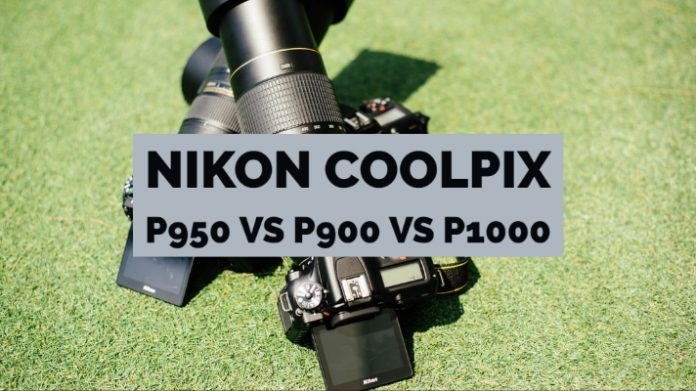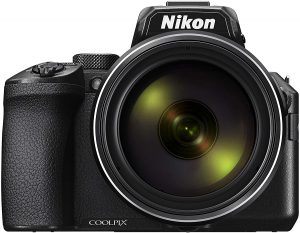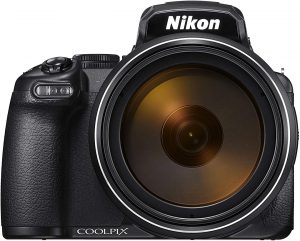Nikon has been a clear leader in the superzoom bridge category of cameras. The Nikon Coolpix P950 VS P900 VS P1000 has been a few exciting choices when you are looking for the best superzoom selections ever. How do they compare themselves? Well, we will check out the three competing cameras from Nikon and compare their features to arrive at the best functions offered by each of them.
Related: Best 4K Superzoom Cameras
Nikon Coolpix P900 – A Sneak Peek

Although a bit dated, the camera provides you access to an unprecedented zoom range, but the image quality is stated to be not proper enough. It offers you a whopping 83x zoom capability that starts right from 24 mm ultrawide to an enormous 2000 mm. The exceptional dynamic zoom capability is in the range of 4000 mm.
Of course, that sort of zoom is not something you would be comfortable with. If you are into sporting events or bird/wildlife photography, that would be an excellent option, though. The considerable zoom capability does not translate into better image quality, though. It has a small 1/2.3-inch 16-megapixel BSI CMOS sensor. That would mean you cannot expect a DSLR like picture quality.
It comes with a Dual Detect Optical VR technology. That does away the need for a tripod. Video shooting quality is one of the excellent options. Low contrast objects can produce low-quality results, though.
You have access to both WiFi and NFC. You would be able to transfer the photos and images to your devices, and can even be used to control your camera remotely.
Nikon Coolpix P950 – A Concise Review
If you are someone impressed with the Nikon Coolpix P900 and its high end zooming features, the P950 brings in new capabilities. It uses the same zoom range and the same small 1/2.3-inch 16-megapixel BSI CMOS sensor.
So, What’s really new then on the upgraded version of the Coolpix P950? Well, the new P950 adds up the 4K Ultra HD resolution to its kitty. It can now capture RAW images as well. There is an inclusion of a high-resolution electronic viewfinder. You will also find a new mic jack that was not available on the previous version.
Yet another addition you would find on the new P950 is the introduction of the SnapBridge wireless system. This will help transfer your photos from your camera to your compatible devices. An upgrade to the 2015 camera in 2020 is a clear indication that Nikon never stops working on bringing in new features to its bridge cameras.
Nikon Coolpix P1000- An Overview
The Nikon Coolpix P1000 is a new evolution among the superzoom cameras from Nikon. It is the best superzoom camera ever and offers you outstanding zoom functionality and comes with an eternal focal range ever on a camera as yet.
The camera features a 125X zoom capability. But, once again, this excellent zoom lens has a typical point and shoot sensor. That would be something likely to defeat the very purpose of the superzoom camera. You get a 16-megapixel, 1/2.3-inch sensor on the camera. That would mean while the lens is just out of this world, the picture quality may not be something you would be happy with.
The camera shoots in 4K ultra HD resolution. And then, there is a powerful optical stabilization option. The mammoth lens on a compact camera has made it a little overweight. So handling it would be easy? Well, the experts will have to shed light on the exact condition.
Spec Comparison between the three competing cameras from Nikon – Nikon Coolpix P950 VS P900 VS P1000
Well, that was all about the best features offered by the three superzoom cameras from Nikon. If you are still undecided and want to undertake a spec comparison of the three Nikon Coolpix cameras, the following head to head comparison chart should be helpful enough in arriving at the right decision.
| Features and Particulars | Nikon Coolpix P900 | Nikon Coolpix P950
| Nikon Coolpix P1000 |
| Maximum Resolution | 4608 x 3456 – Image Full HD: 1920×1080/ 60p – Video ISO Hi 1 (equivalent to ISO 12800) (available when using High ISO monochrome in special effects mode) | 4608 x 3456 | 4608 x 3456 |
| Body type | SLR-like (bridge) | SLR-like (bridge) | SLR-like (bridge) |
| Image ratio | 4:3 | 4:3 | 4:3 |
| Effective resolution in pixels | 16 MP Total Pixels: 16.76 million (approx.) | 16 MP Total Pixels: 16.76 million (approx.) | 16 MP Total Pixels: 16.76 million (approx.) |
| Sensor size | 1/2.3″ (6.17 x 4.55 mm) | 1/2.3″ (6.17 x 4.55 mm) | 1/2.3″ (6.17 x 4.55 mm) |
| Sensor Type | BSI-CMOS ISO Sensitivity: ISO 100 – 1600 ISO 3200, 6400 (available when using P, S, A or M mode) | CMOS | BSI-CMOS |
| Processor | EXPEED 2 | Nikon EXPEED | |
| Colour Space | sRGB | sRGB | sRGB |
| Color filter array | Primary color filter | Primary color filter | Primary color filter |
| ISO | Auto, 100-6400, expandable to 12800 (B&W only) | Auto, 100-6400 | Auto, 100-6400 |
| Lens |
|
| |
| White Balance Presets | 5 | 5 | 5 |
| Image stabilization | Optical Lens shift VR (still pictures) | Optical
| Optical Lens shift VR (still pictures) |
| RAW Support | No | Yes | Yes |
| Image file format | JPEG (Exif v2.3) | JPEG Raw (NRW) | JPEG (Exif v2.31) Raw (NRW) |
| Focal Length | 24–2000 mm | 24–2000 mm | 24–3000 mm |
| Optical Zoom | 83.3x | 83.3x | 125x |
| Maximum Aperture | F2.8–6.5 | F2.8–6.5 | F2.8–8 |
| Autofocus options | Contrast Detect (sensor) Multi-area Center Selective single-point Tracking Single Continuous Face Detection Live View | Contrast Detect (sensor) Multi-area Center Selective single-point Tracking Single Continuous Touch Face Detection Live View | Contrast Detect (sensor) Multi-area Center Selective single-point Tracking Single Continuous Face Detection Live View |
| Digital Zoom | Yes, 4X | Yes, 4X | Yes, 4X |
| Macro Focus range | 1 cm (0.39″) | 1 cm (0.39″) | 1 cm (0.39″) |
| Normal focus range | 50 cm (19.69″) | 50 cm (19.69″) | 30 cm (11.81″) |
| Screen | Fully articulated – 3.” diagonal | Fully articulated – 3.” | Fully articulated – 3.2.” |
| Screen resolution | 921,000 dots | 921,000 dots | 921,000 dots |
| Minimum shutter speed | 15 sec | 300 sec | 60 sec |
| Maximum shutter speed | 1/4000 sec | 1/4000 sec | 1/4000 sec |
| Exposure modes | Auto Program Aperture priority Shutter priority Manual | Program Aperture priority Shutter priority Manual | Program Aperture priority Shutter priority Manual |
| Flash | No | Yes, through Hot Shoe | Yes, through Hot shoe |
| Continuous shooting | 7.0 fps | 7.0 fps | 7.0 fps |
| Video formats | MPEG-4, H.264 | MPEG-4, H.264 | MPEG-4, H.264 |
| Storage types | SD, SDHC, and SDXC | SD, SDHC, and SDXC | SD, SDHC, and SDXC (UHS-I support) |
| Battery | EN-EL23 lithium-ion battery & charger | EN-EL20a lithium-ion battery & USB charger | EN-EL20a lithium-ion battery & USB charger |
| Battery Backup | 360 | 290 | 250 |
| Physical Dimensions | 140 x 103 x 137 mm (5.51 x 4.06 x 5.39″) | 140 x 110 x 150 mm (5.51 x 4.33 x 5.91″) | 146 x 119 x 181 mm (5.75 x 4.69 x 7.13″) |
| Weight | 899 g (1.98 lb / 31.71 oz) | 1005 g (2.22 lb / 35.45 oz) | 1415 g (3.12 lb / 49.91 oz) |
Conclusion
Well, that was a complete comparison between the three competing siblings from Nikon. The three superzoom cameras offer you an excellent option and provide you with equivalent features. Check out those features and find the best one that meets your needs.
More on Superzooms
- Canon PowerShot SX740 HS vs SX540 HS
- Nikon Coolpix A900 vs Canon Powershot SX730
- Nikon Coolpix B500 vs Sony H300 Superzoom



